When reinforcing monolithic concrete structures, it is always necessary to fasten reinforcement rods together. It is long, inconvenient and expensive to do this with the help of welding, so it is customary to tie them with wire, using a hook for knitting fittings. It is an inexpensive and easy to use device for sale anywhere. It is also easy to make it yourself from improvised means, and even a child can learn to use it.
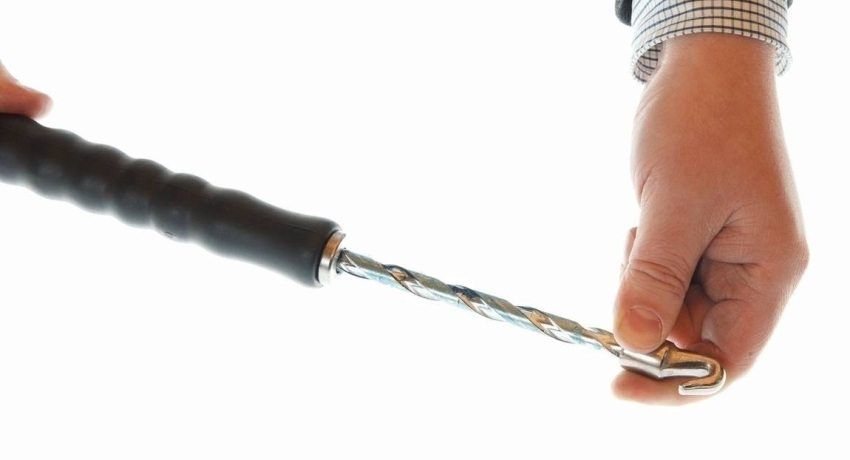
What is a hook for knitting fittings
Reinforcing hook is a hand-held device designed for the convenience of tightening the knitting wire around the reinforcing rods in order to fasten them together. It represents a metal hook of a certain shape with a convenient handle. The product can be bought, and its price is only from 2 to 5 cu, or it can be made by yourself, knowing the peculiarities of its shape.

The armature is tied with knitting wire, which has a thickness of no more than 1-2 mm. At the same time for thicker reinforcement and wire is taken more section. It is sold by bays in which 50, 100, 200 m are wound. The cost of the bay is insignificant, therefore you should not try to save on it using wire not intended for this purpose.
The shape of the hook has the form of a rod, the tip of which is slightly bent, so that it is convenient to grip the wire in the process of the binding itself. Not every store hook can fit perfectly. It happens that the bends are uncomfortable or wrong, or the rod is too thin, allowing the hook to bend. Therefore, sometimes it is more rational to make a self-made hook for fittings.
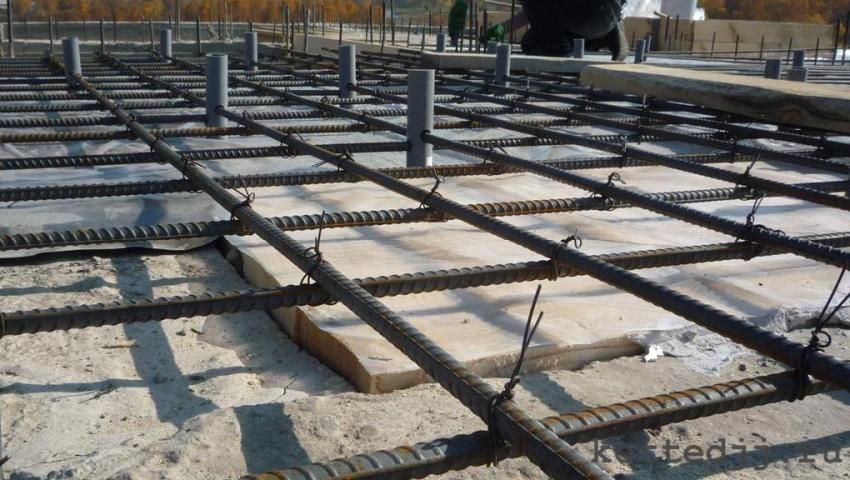
Helpful advice! For the manufacture of homemade hook is better to use a rod of elastic steel. It should not unbend with considerable effort.
It is easiest and cheaper to make a knitting device from an ordinary welding electrode having a thickness of at least 4 mm. It is perfect for a small amount of work. In case it is necessary to tie up a large amount of reinforcement, then it is better to refuse to use the electrode hook, since the hand gets very tired of it.
Wood splitter with their own hands: drawings, photos, instructions. How to choose a wood splitter. Types of wood splitters. Features screw, hydraulic and slatted wood splitters. Self assembly of the unit.
In this case, you can make a fixture of a piece of thin reinforcement or other similar metal rod of soft, but elastic steel.

To make a high-quality and convenient fixture, with the help of which it is possible to tie a large amount of reinforcement without getting tired, you will need:
- a piece of rebar or steel rod with similar characteristics of a length of 15-20 cm and a diameter of 6-8 mm;
- two hexagonal nuts, as well as two washers slightly larger than the armature, of diameter that can be tightly put on the rod;
- any handle of a screwdriver or paint roller.
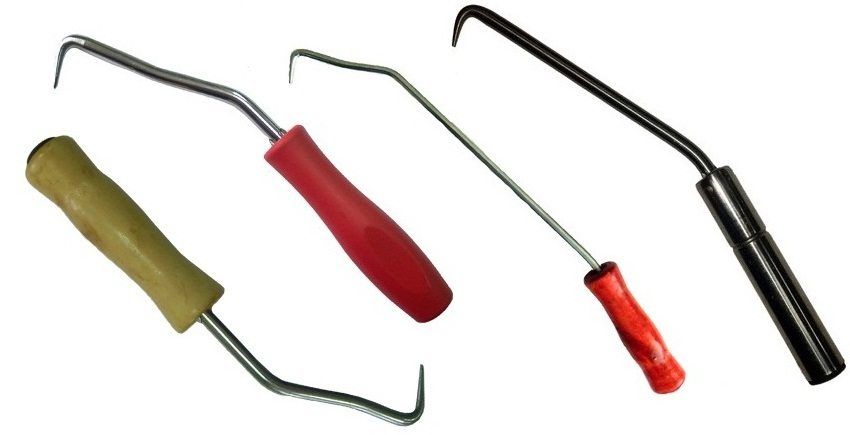
Nuts and washers fixed on the rod handle so that it does not dangle along it. This should maintain the free rotation of the handle around the rod. The second side of the rod is slightly sharpened like an awl and bent. How to bend the end of the rod can be viewed on any photo. This option is a bit more complicated than in the case of the electrode, but it is much more convenient to work with it, and it is impossible to call it disposable, since it has a decent service life.

Such a device is not so easy to make yourself, but you can buy ready-made in any store. This hook can be considered semi-automatic, since the special device of its handle allows you to rotate the tip, making only translational motion. In practice, it turns out that if you pull the hook towards you, the tip turns and tightens the wire. In this case, the worker is required to make minimal effort, and the speed of binding increases several times. Its use is very convenient, but the cost of such a device is much higher, so you should only buy it with large amounts of work.
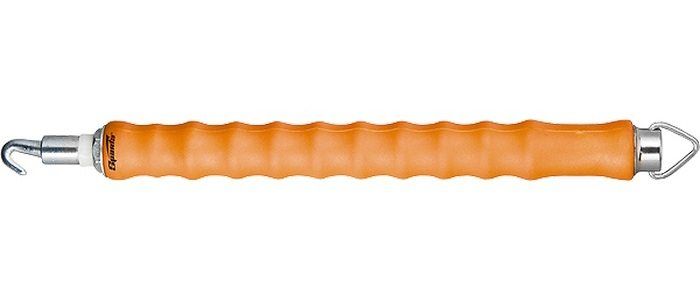
The semi-automatic hook is sometimes done independently in a very simple way. To do this, take a nail with a curved end and chop off his hat. With this end it is inserted into the screwdriver. After a short workout, you can perfectly adjust the rebar with knitting wire with the help of this improvised device. To do this, we need some thin metal rod, for example, a nail devoid of a cap, one tip of which needs to be slightly bent to the side, and the other end to be set in a screwdriver.

Those who are professionally engaged in construction, it would be advisable to purchase a special automatic device, which is called a gun for rebar. It is very convenient to use it, because it is able to do it by node per second. The wire can not be cut into individual pieces. It is simply inserted into the device, which ties a knot in the right place and cuts off the ends. Such a pistol works on the battery, which makes it unnecessary to have an electric cable at the construction site itself.
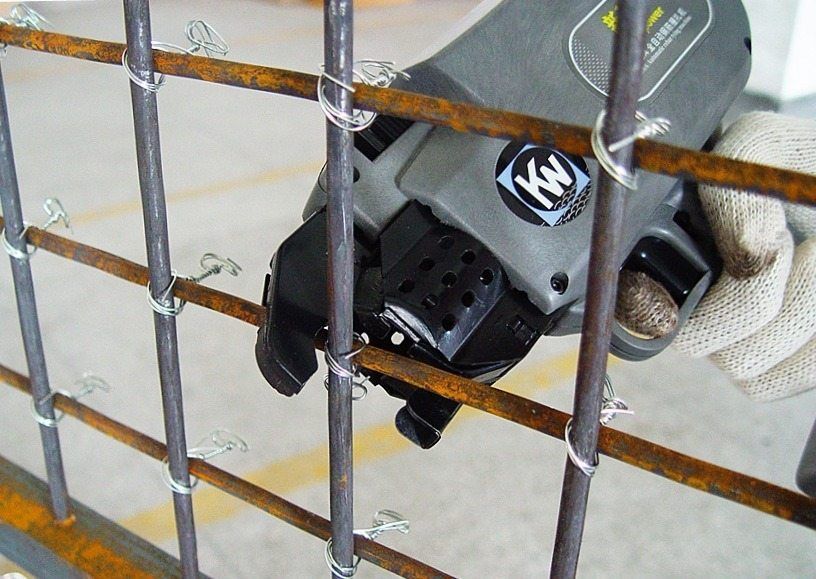
No matter what kind of rebar binding we use, the technology will always be the same. It is extremely simple and accessible to anyone. The wire must be cut into pieces 30 – 40 cm long, however, this parameter can strongly depend on the cross-section of the rods.
Helpful advice! Before you cut the wire you need to do a few samples. Having calculated the required length, it is possible to cut the wire more precisely so that there is no residue left.
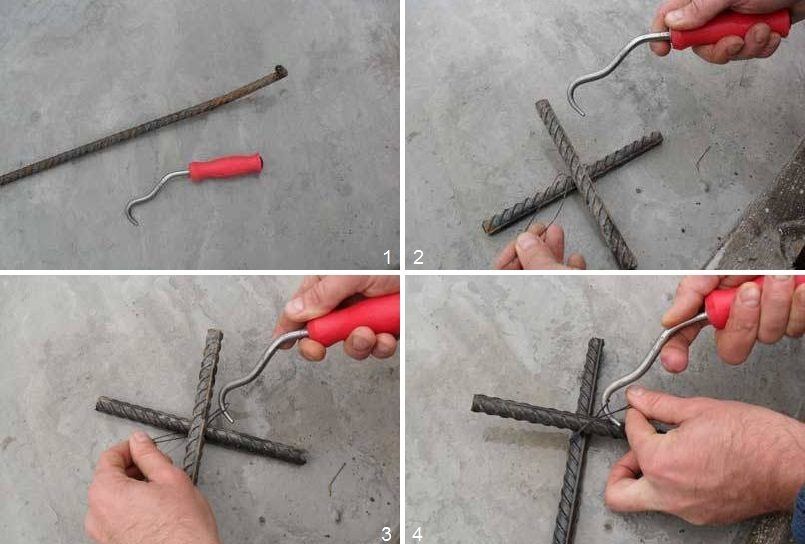
Next, we follow a very simple algorithm:
- The double-cut knitting wire is wrapped around the knot to be fastened.
- The hook is inserted into the resulting wire loop and hook it to the other end. After that make simple rotational movements.
- The first few turns are made fairly quickly.
- Then the rotational speed is slowed down and the knot is pushed down with great care so as not to tear the wire.
- After that, the hook is simply pulled out and make control of the strength of the connection.
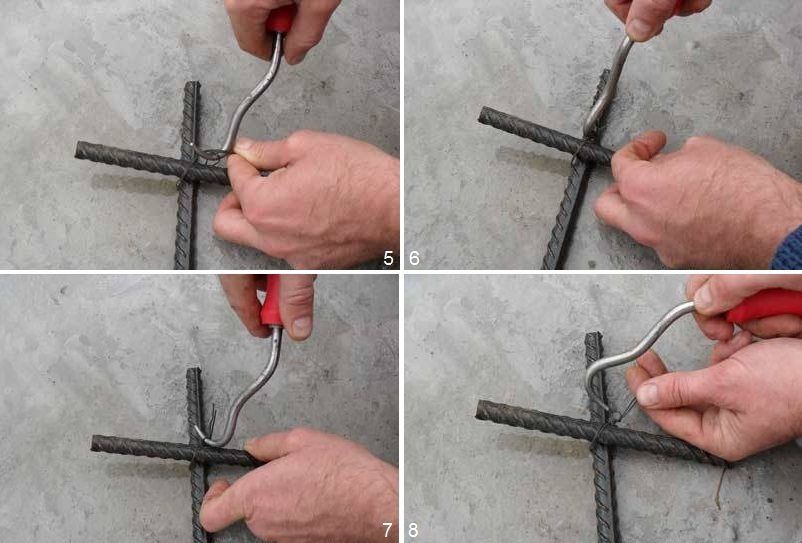
Helpful advice! To check the reliability of the tie does not need to try the wire itself. It is necessary to shake the bars of the reinforcement relative to each other. They should not move.
Hook for tying reinforcement is a simple, but very necessary tool, which is easy to make from improvised means by yourself.

